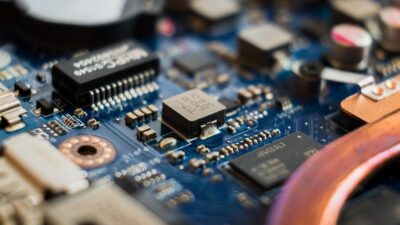Introduction
The evolution of Graphics Processing Units (GPUs) has been nothing short of remarkable. Initially designed to accelerate the rendering of images and videos in computer graphics, today’s GPUs have transcended their original purpose, becoming powerful general-purpose processors capable of handling complex calculations across various fields. This article explores the journey of GPU technology from its inception to its current state, highlighting the significant advancements that have transformed it into a cornerstone of modern computing.
The Birth of GPUs
In the early days of computing, CPU (Central Processing Unit) architecture was primarily focused on general computation tasks. However, as graphical interfaces became more prevalent in the 1980s and 1990s, the need for specialized hardware to render 2D and 3D graphics emerged. This led to the development of the first GPU, the NVIDIA RIVA 128, in 1997, which integrated hardware acceleration for 3D rendering. This innovation allowed for smoother graphics and more sophisticated visual effects, setting the stage for future advancements.
The Rise of 3D Graphics
The late 1990s and early 2000s saw a surge in demand for advanced 3D graphics in video games and professional applications. Companies like NVIDIA, ATI (now part of AMD), and Matrox began to produce more powerful GPUs with dedicated memory and advanced features like texture mapping, anti-aliasing, and shading. NVIDIA’s GeForce series, launched in 1999, was pivotal, becoming synonymous with high-performance gaming.
With the introduction of programmable shaders in the early 2000s, developers gained unprecedented control over graphics rendering, allowing for more complex visual effects. This shift not only enriched the gaming experience but also paved the way for further computational uses beyond graphics.
The Transformation to GPGPU
As GPUs became increasingly programmable, researchers and developers began exploring their potential for general-purpose computing—a paradigm known as General-Purpose computing on Graphics Processing Units (GPGPU). The rise of parallel computing demonstrated that GPUs, with their hundreds of cores, could execute many simultaneous operations, making them ideal for tasks such as scientific simulations, machine learning, and data processing.
In 2006, NVIDIA launched CUDA (Compute Unified Device Architecture), allowing developers to use C language to write code for GPUs. This democratization of GPU programming accelerated innovation across various fields, enabling the processing of datasets that were previously unmanageable on traditional CPU architectures.
The Age of Deep Learning
The explosion of artificial intelligence (AI) and machine learning in the 2010s further solidified GPUs as essential tools for computation. Deep learning models, which require vast amounts of data and complex mathematical calculations, benefited immensely from the parallel processing capabilities of GPUs. The use of GPUs in training deep neural networks significantly reduced the time required for computations, making it feasible to tackle large-scale AI projects.
Companies like Google and Facebook began to employ GPUs in their data centers, further driving demand. The introduction of frameworks such as TensorFlow and PyTorch, which support GPU acceleration, facilitated broader access to deep learning, empowering researchers and practitioners in the field.
Current Trends and Future Directions
As of 2023, GPUs continue to evolve, with advancements in architecture, increased memory bandwidth, and sophisticated features like real-time ray tracing. Manufacturers like NVIDIA, AMD, and Intel are focusing on optimizing power efficiency while enhancing performance, making GPUs more accessible for everyday use, from gaming to running enterprise-level AI models.
Moreover, the rise of edge computing is prompting developments in specialized GPUs for environments where space and power are limited, such as in autonomous vehicles and Internet of Things (IoT) devices. The emergence of chips designed specifically for AI tasks, like inference engines, is also shaping the future of GPU technology.
Conclusion
From their early days as graphics accelerators to their current role as powerful computing platforms, GPUs have undergone a revolutionary transformation. As technology continues to advance and new applications for GPUs emerge, they are likely to play an even more integral role in shaping the future of computing. The journey from graphics to compute illustrates not just the evolution of a technology but also the changing landscape of how we process information and develop innovative solutions across various domains. As we move forward, one thing is clear: GPUs will remain a cornerstone of technological advancement, empowering innovation in ways we are just beginning to imagine.


